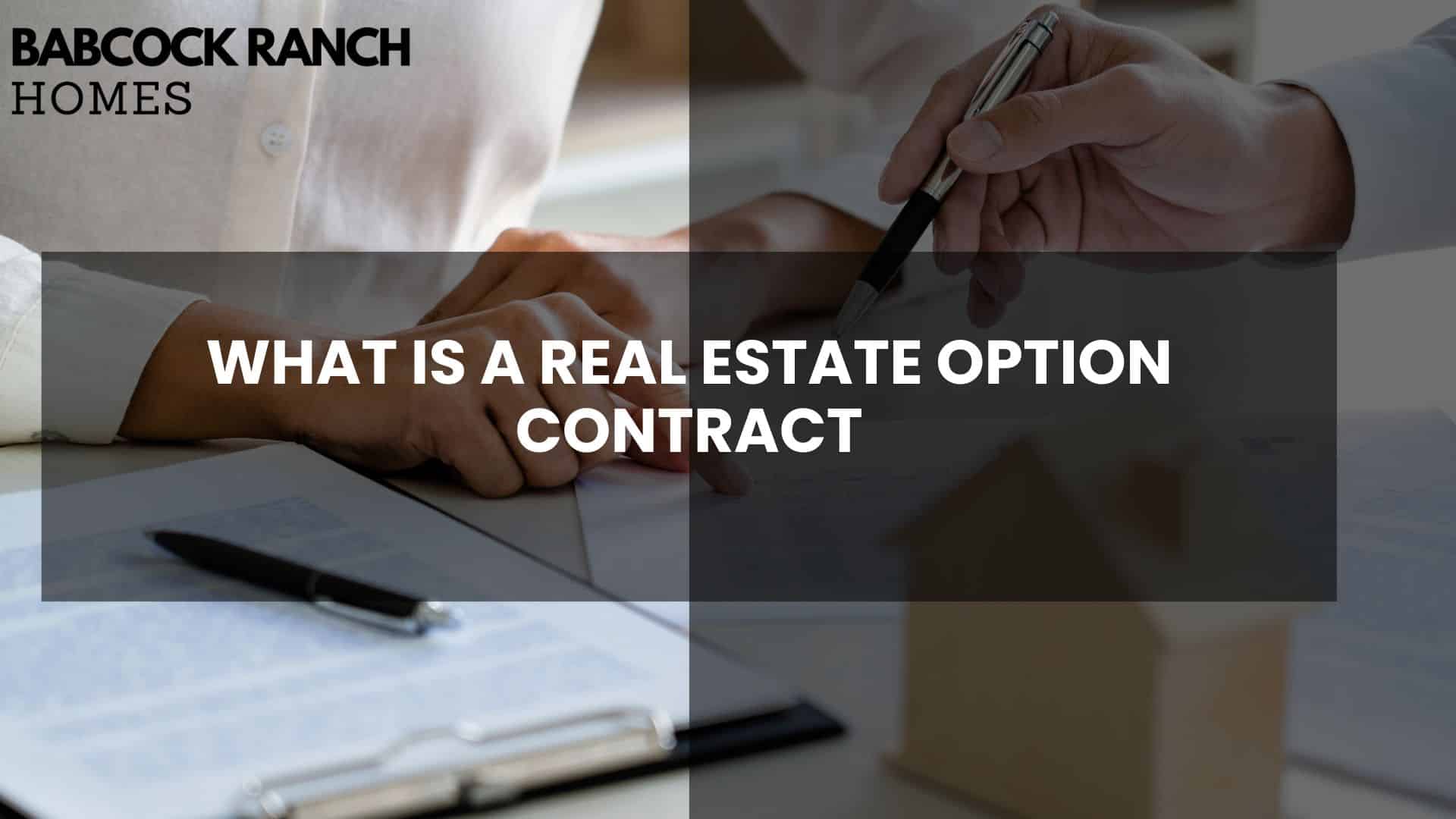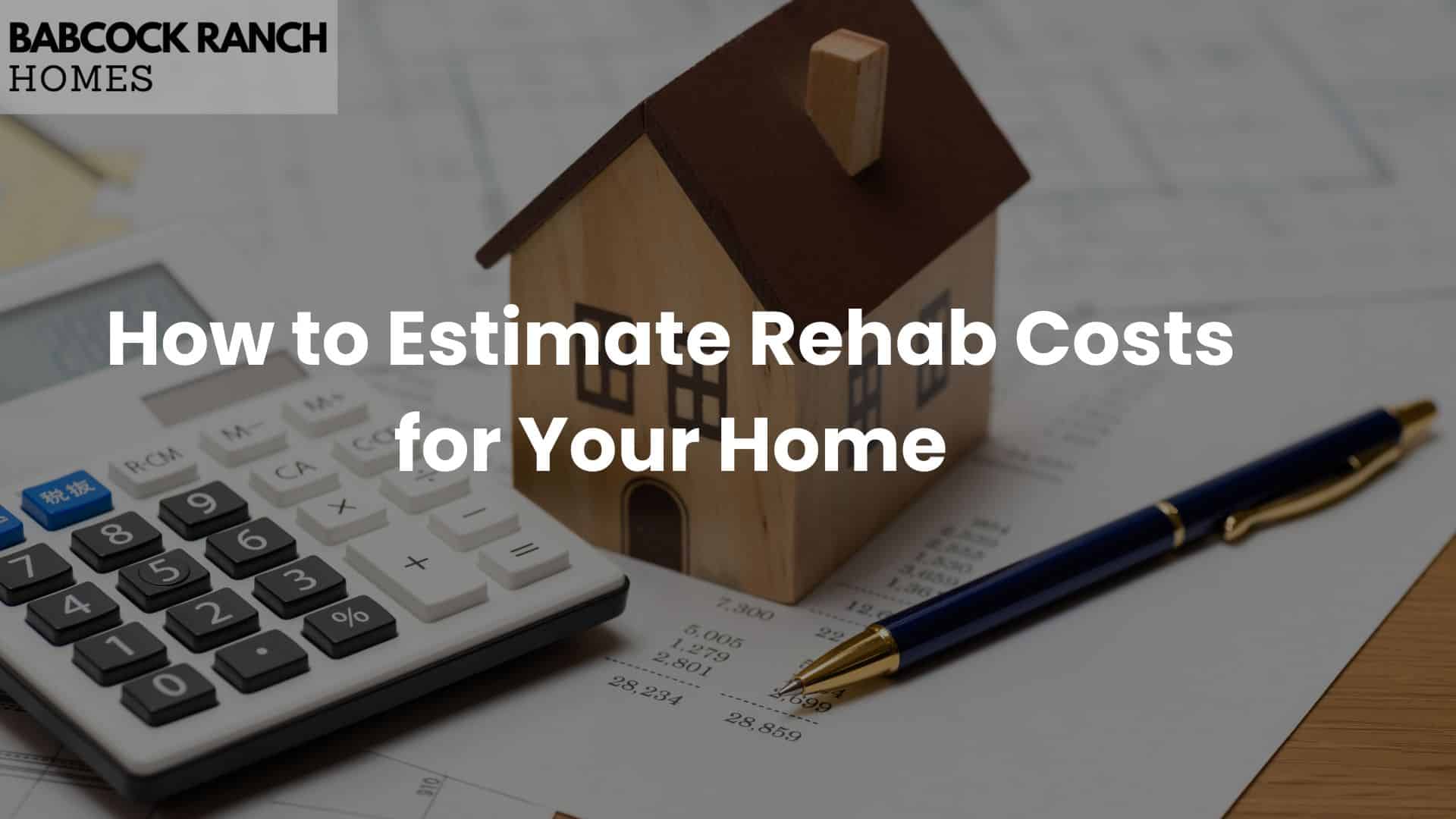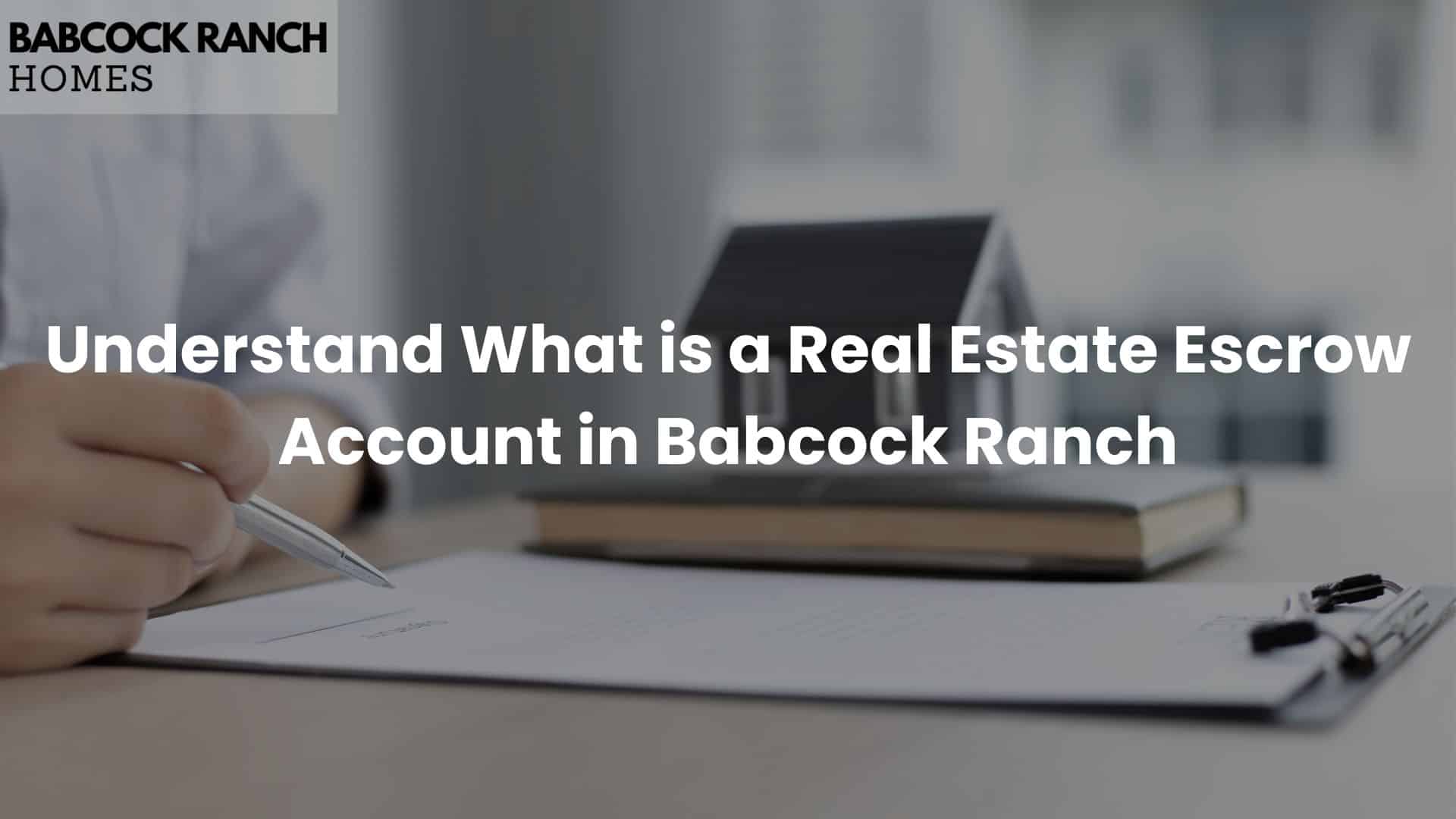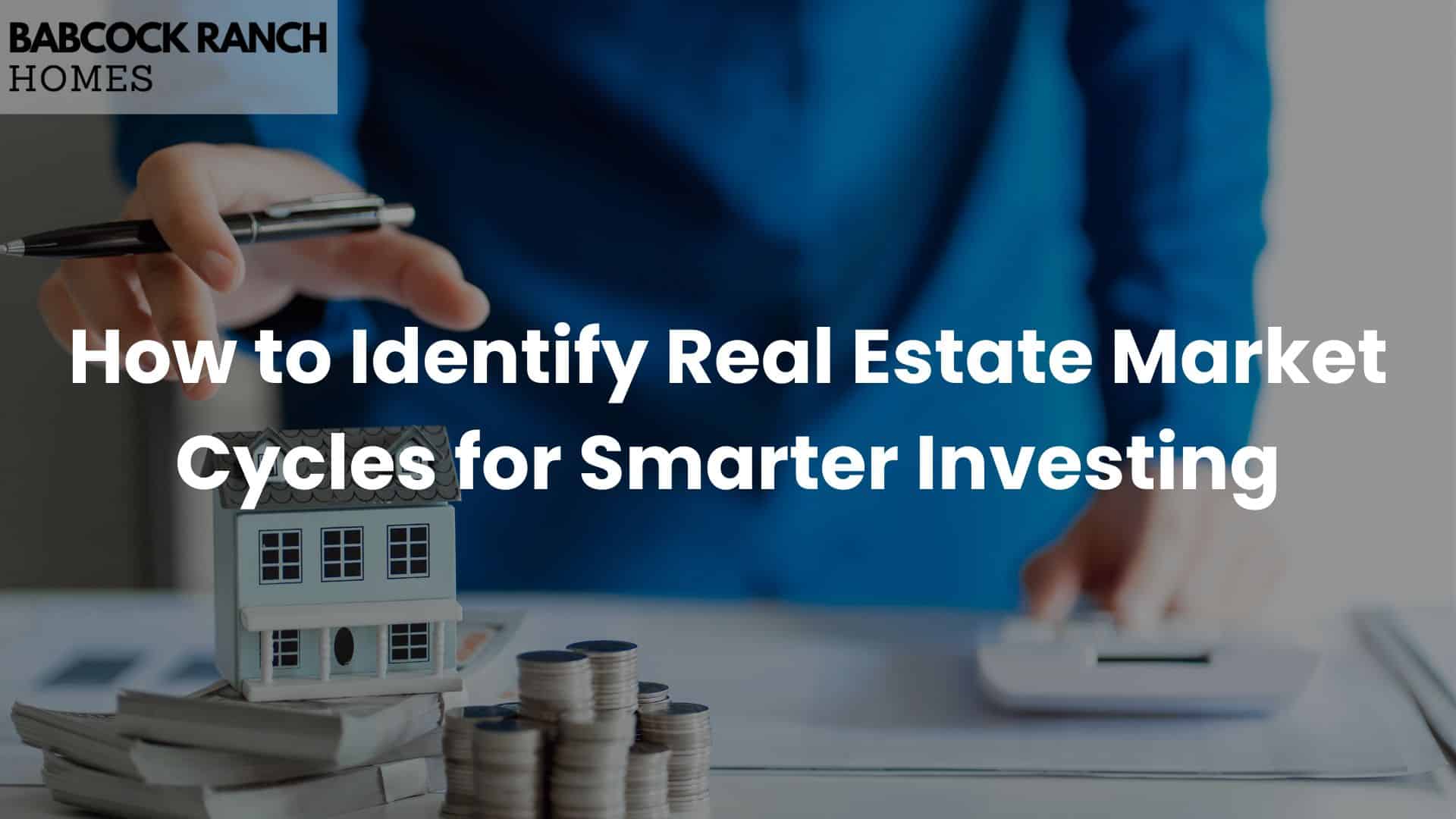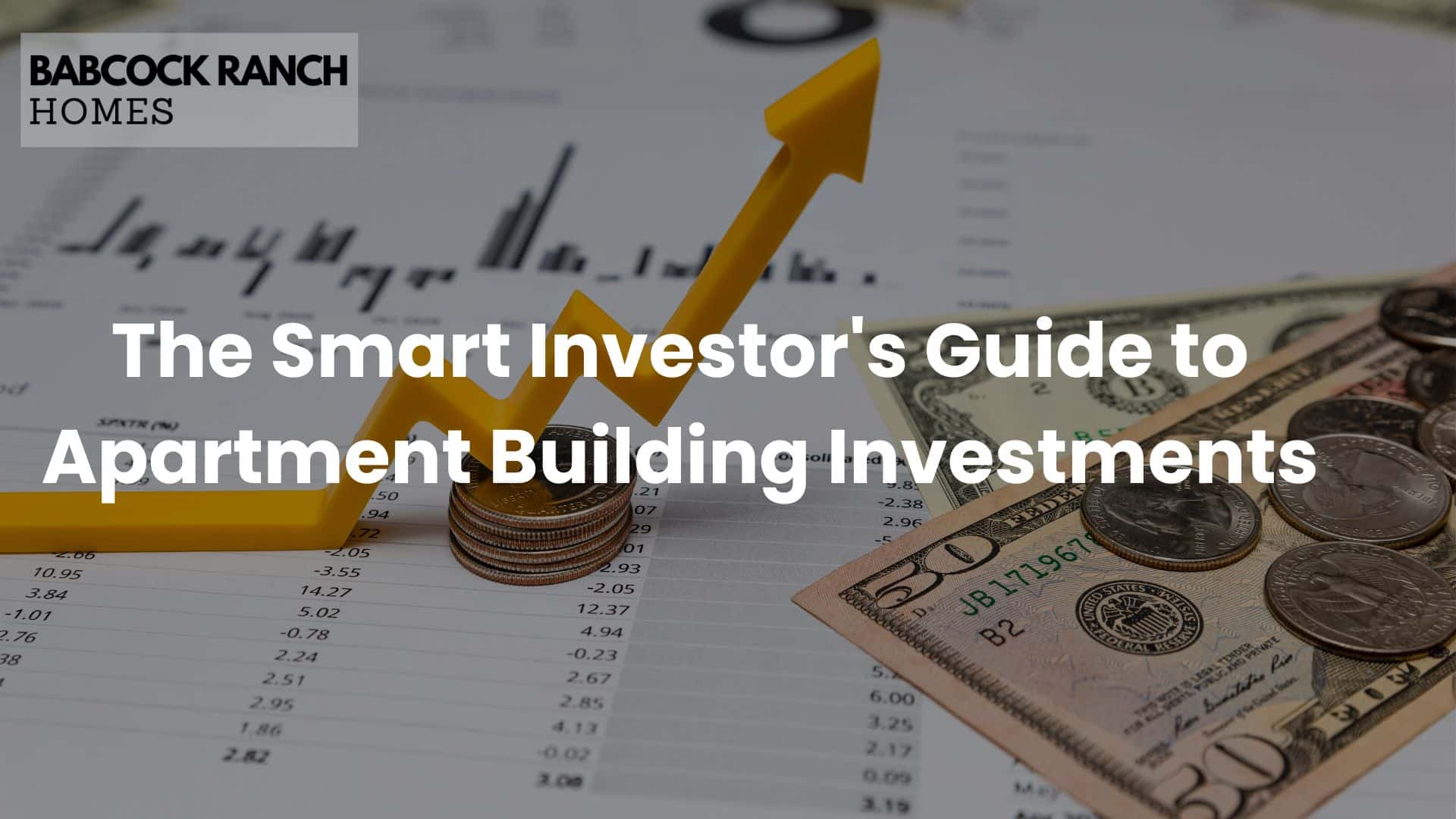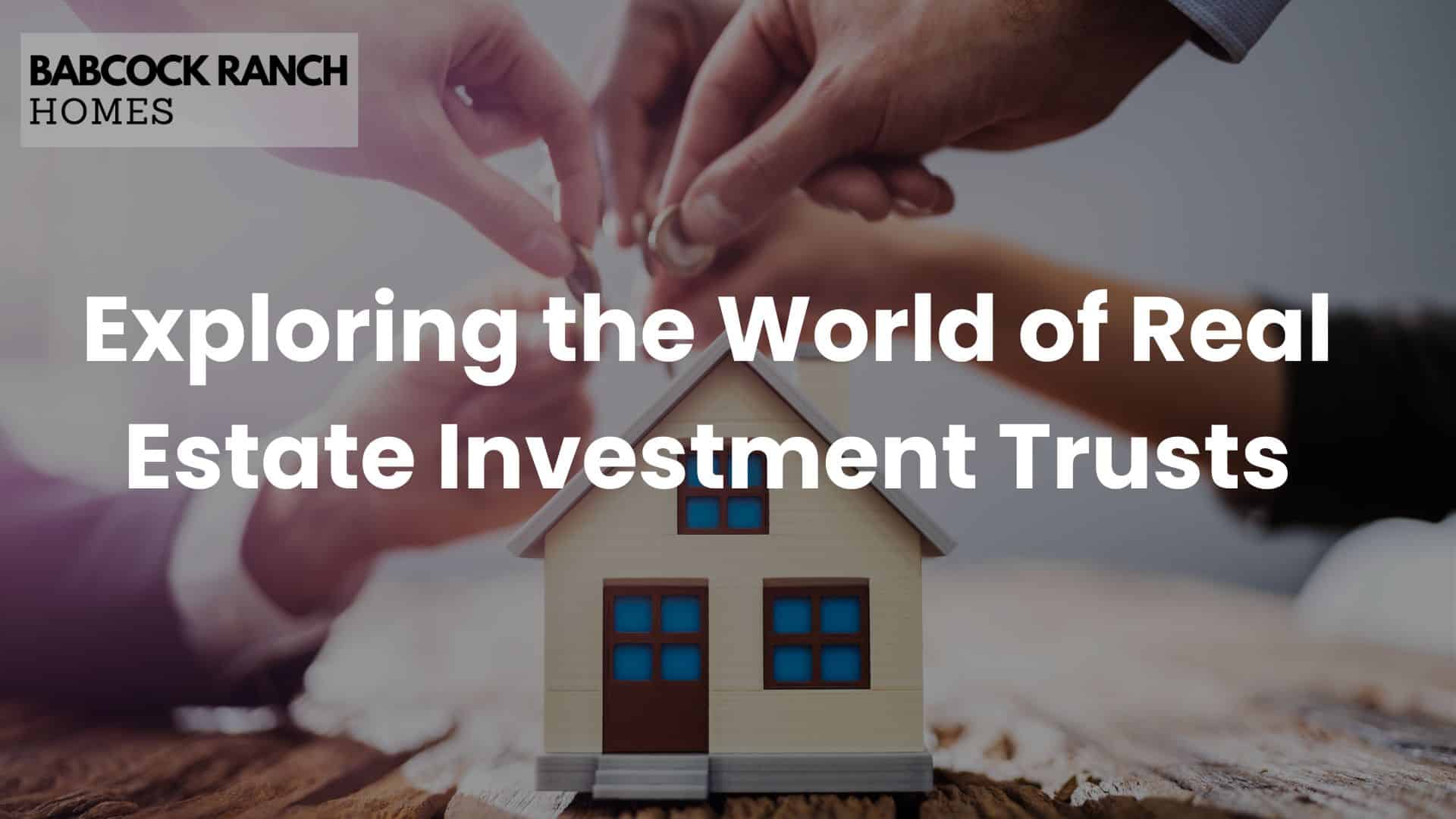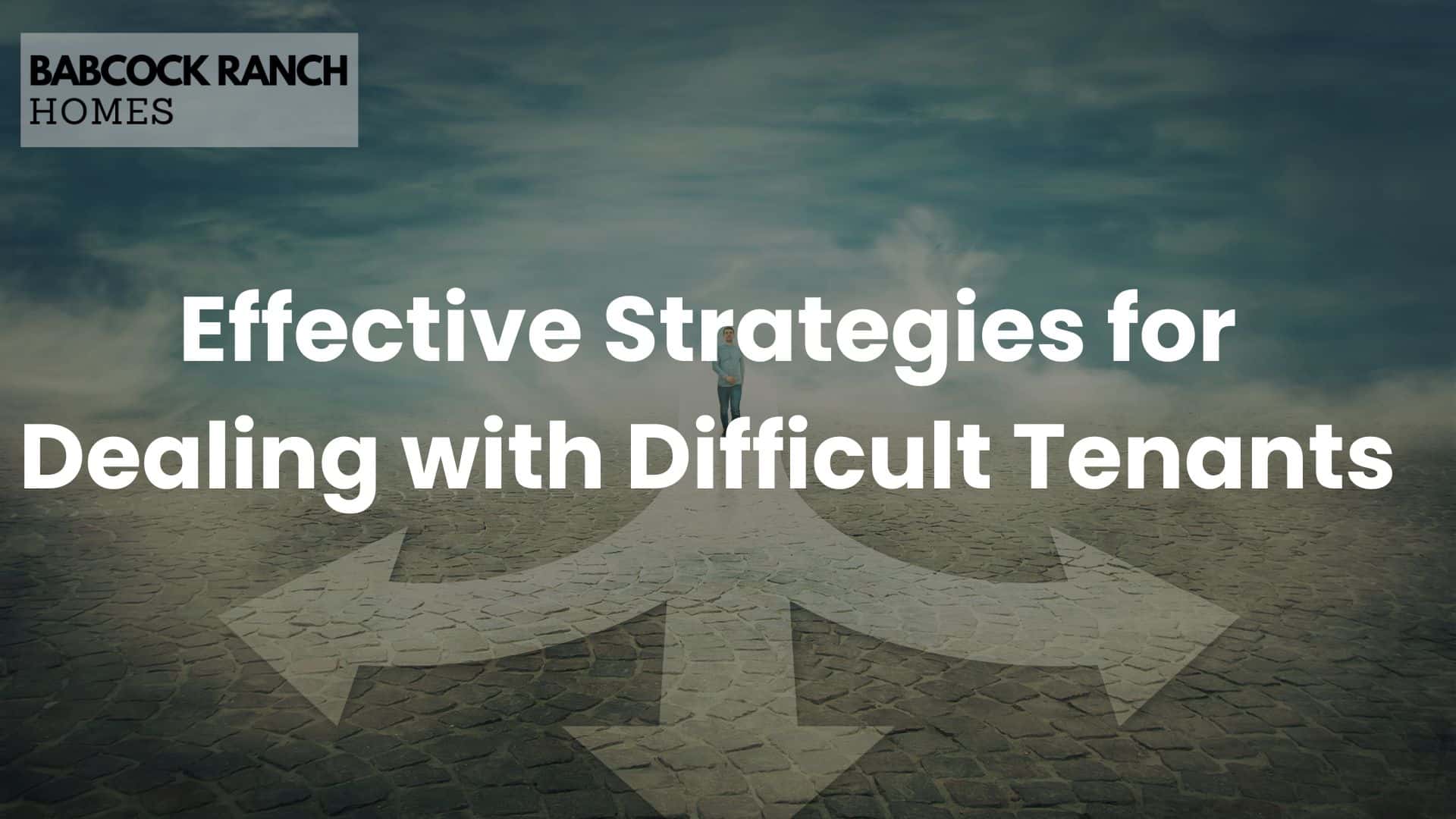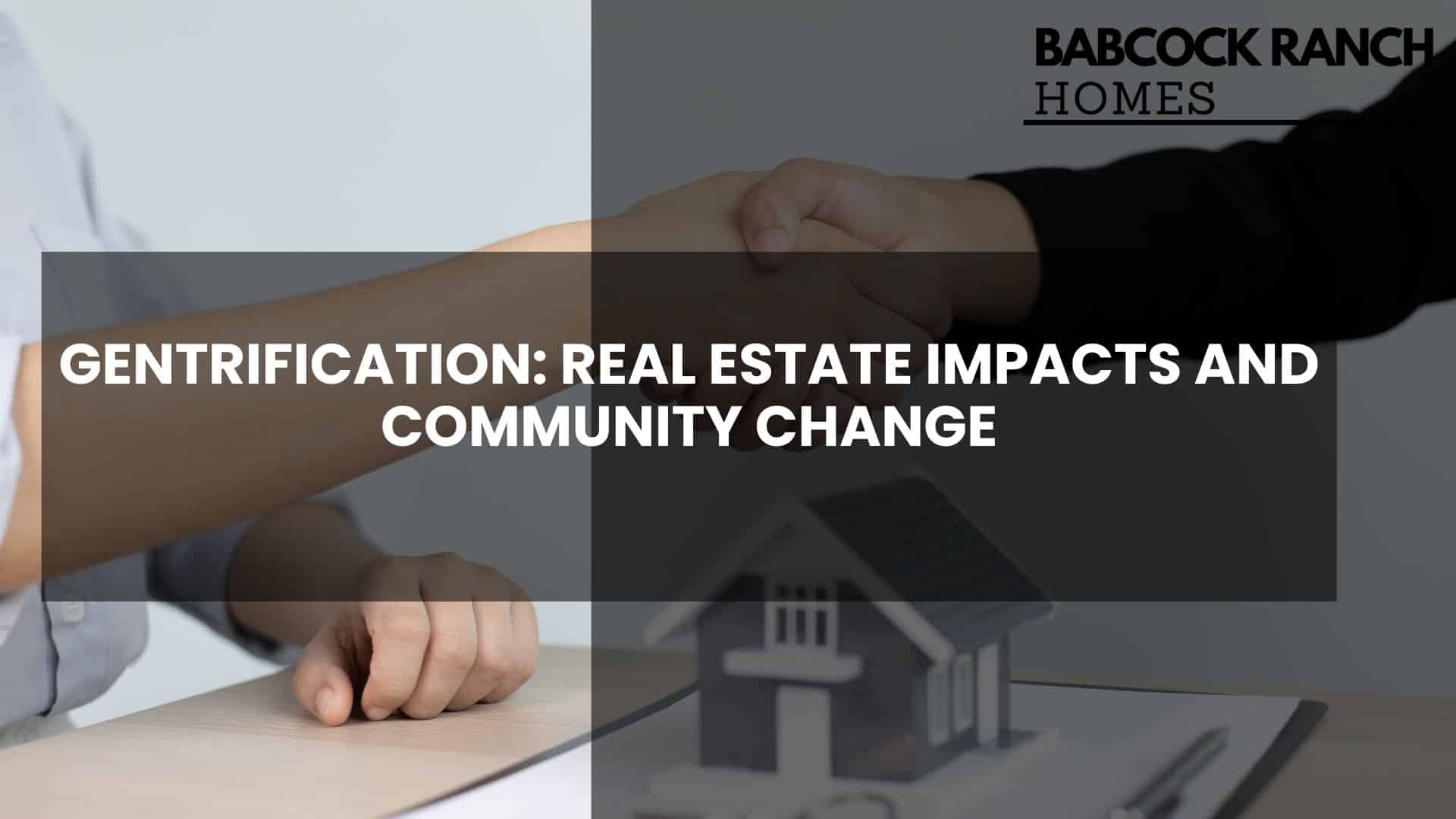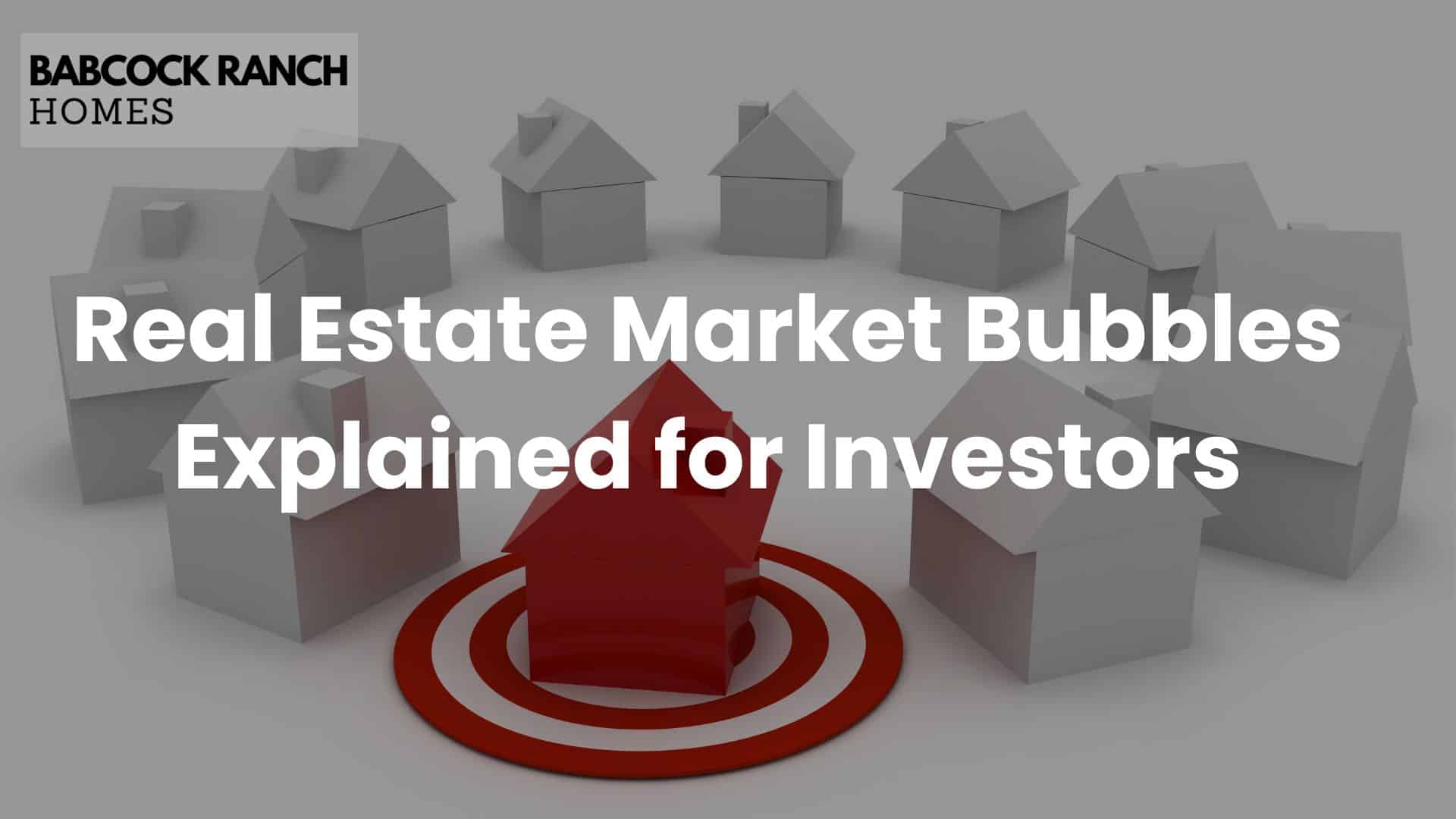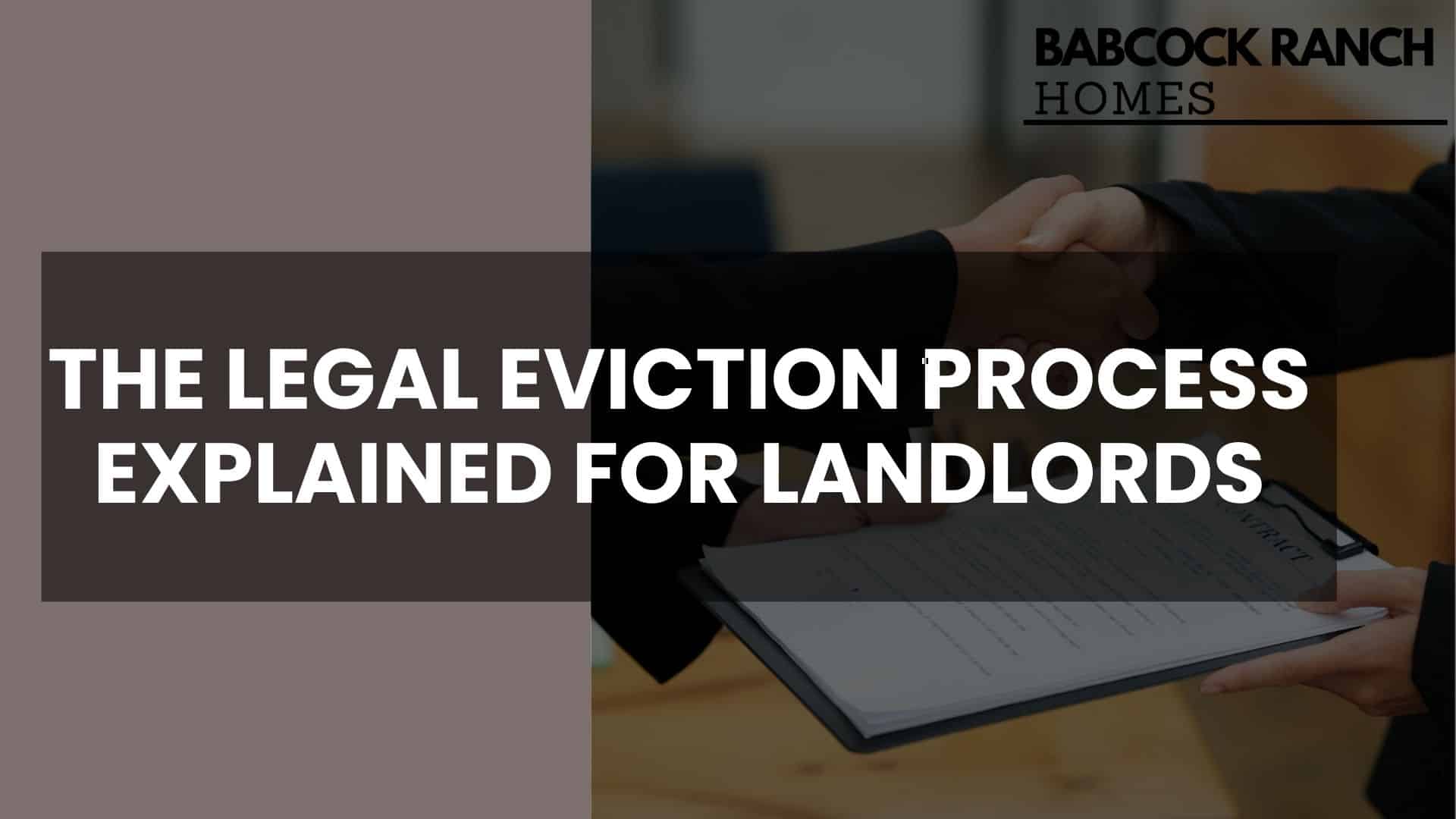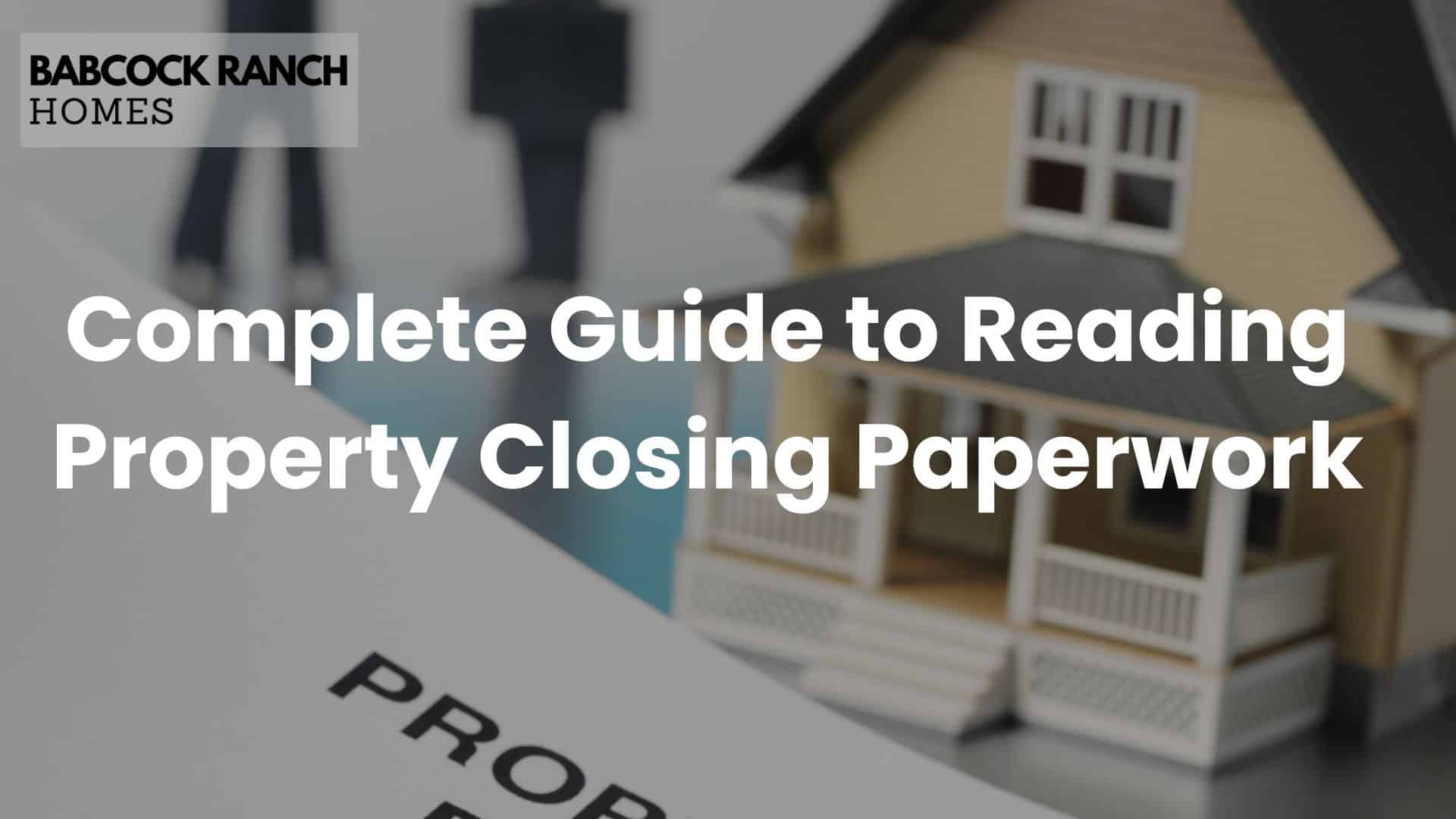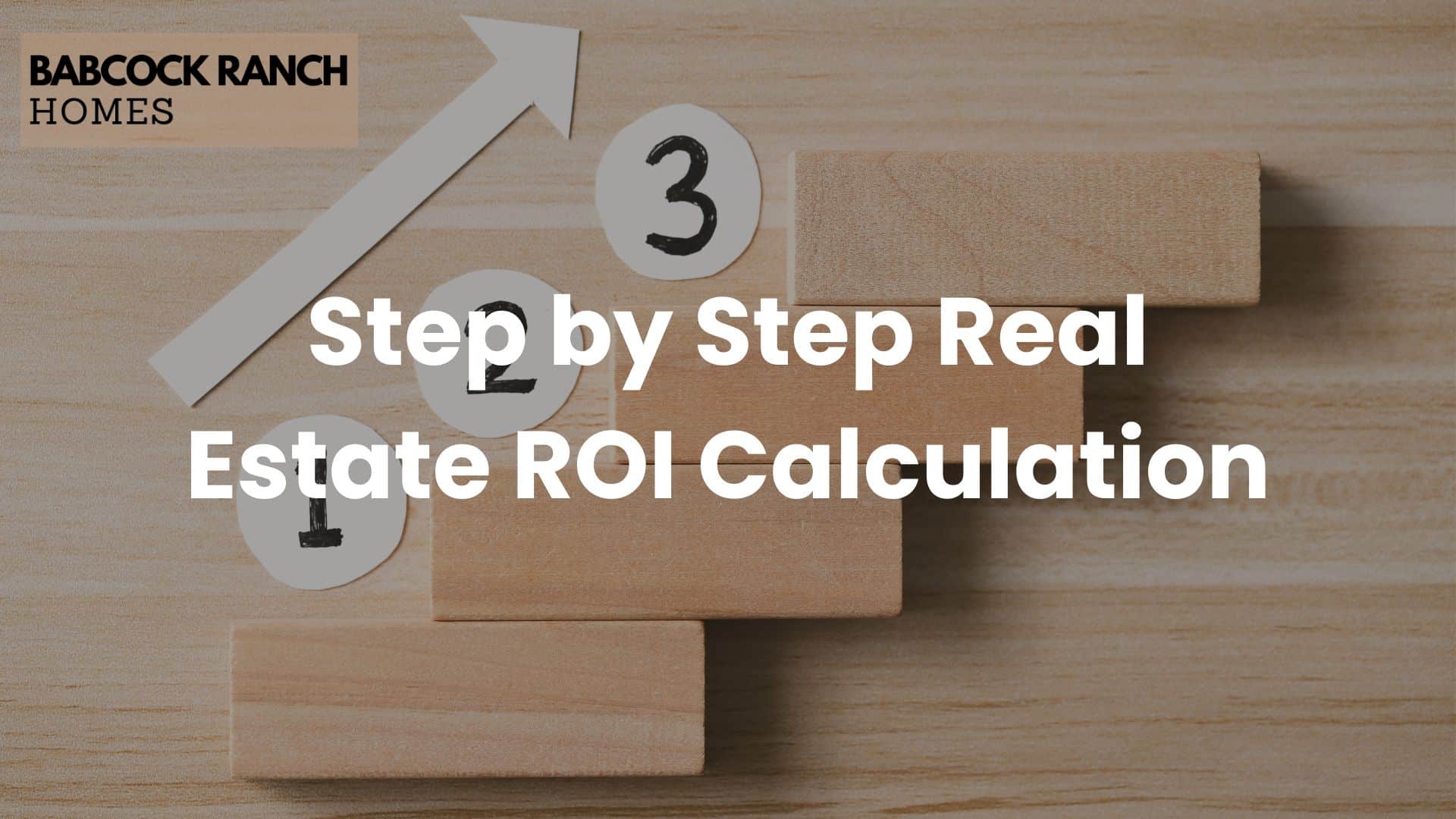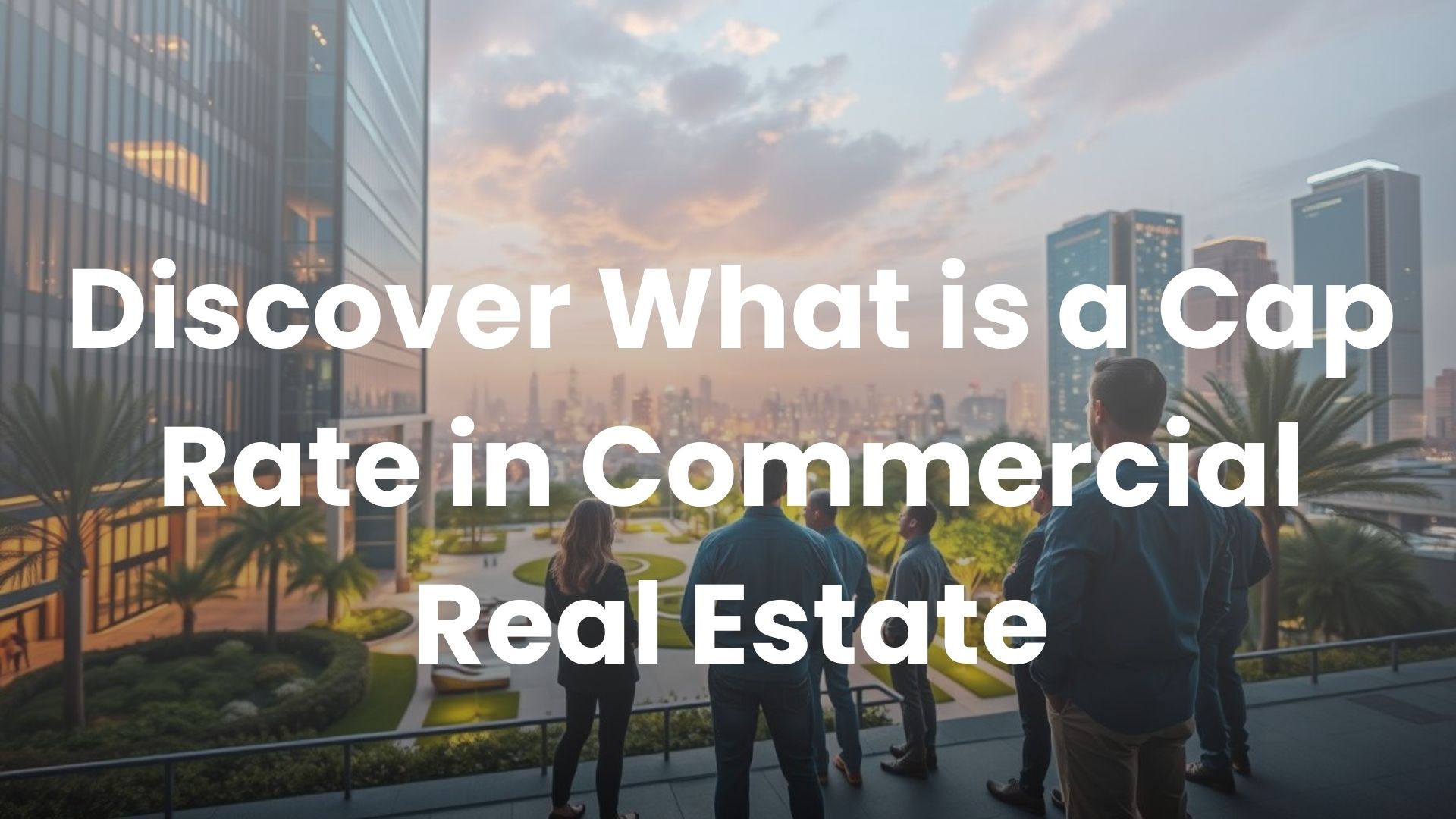
Understanding the capitalization rate, or cap rate, is crucial for investors in commercial real estate. It serves as a fundamental metric for evaluating investment opportunities, allowing investors to compare different properties and estimate their potential return on investment.
The cap rate is calculated by dividing a property’s net operating income by its current market value. This rate provides a snapshot of the potential return, helping investors make informed decisions. At Babcock Ranch Homes, located in Babcock Ranch, Florida, we offer expert guidance to investors navigating the commercial real estate market. For more information, you can contact us at 518-569-7173.
Key Takeaways
- Cap rates are essential for evaluating commercial real estate investments.
- Understanding cap rates helps investors make informed decisions.
- The cap rate is a useful metric for comparing different properties.
- Babcock Ranch Homes provides expert guidance for investors in Babcock Ranch, Florida.
- Cap rates vary across different property types and market conditions.
Understanding Cap Rates in Commercial Real Estate
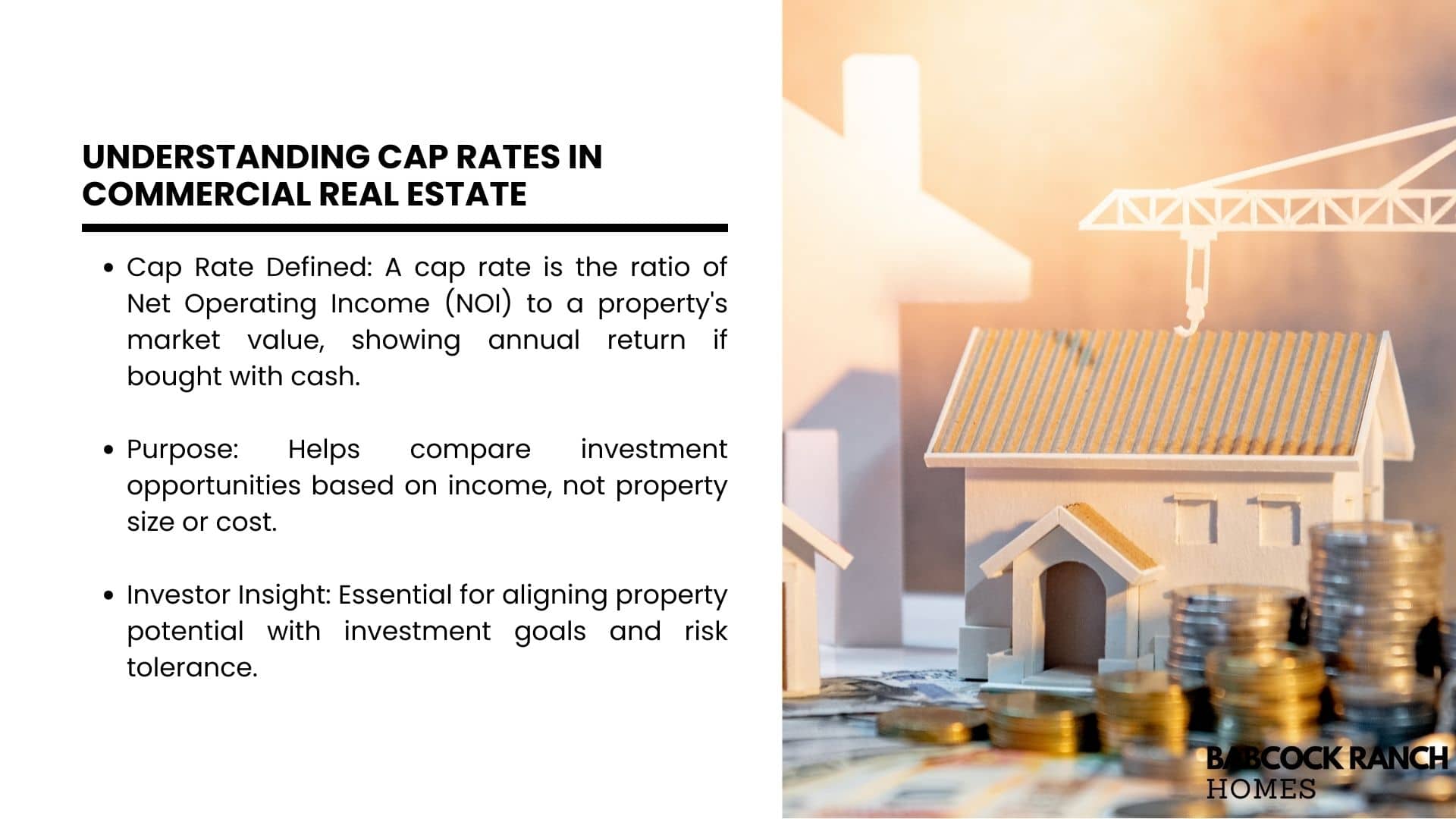
When diving into commercial real estate, understanding the cap rate is essential for assessing the profitability of a property. The capitalization rate, or cap rate, is a crucial metric that helps investors evaluate the potential return on their investment.
The capitalization rate is the most popular measure through which real estate investments are assessed for their profitability and return potential. It represents the yield of a property over a one-year time horizon, assuming the property is purchased with cash and not on loan.
Definition and Basic Concept
The cap rate is defined as the ratio between a property’s net operating income (NOI) and its current market value, expressed as a percentage. This metric provides a snapshot of a property’s potential return on investment before considering financing costs or debt service. Unlike residential real estate, which is valued based on comparable sales prices, commercial properties are primarily valued based on their income-generating potential.
- The cap rate allows investors to quickly assess and compare different investment opportunities on an “apples to apples” basis, regardless of property size or price.
- Understanding the basic concept of cap rates is fundamental to commercial real estate investing, as it forms the foundation for more complex investment analyses.
- The cap rate essentially tells investors what percentage return they can expect to receive on their investment if they purchased the property with all cash.
This understanding is vital for investors to determine whether a property aligns with their investment goals and risk tolerance before diving deeper into other financial considerations. By grasping the concept of cap rates, investors can make more informed decisions in the complex world of commercial real estate.
What is a Cap Rate in Commercial Real Estate

In commercial real estate, the cap rate serves as a key performance indicator for investments. It helps investors understand the potential return on their investment. The cap rate is a crucial metric that reflects the ratio of net operating income to the property’s value.
The Mathematical Formula
The cap rate formula is straightforward: Cap Rate = Net Operating Income (NOI) / Property Value, expressed as a percentage. This formula provides a snapshot of the property’s performance at a given time. Understanding this formula is essential for accurately calculating cap rates.
The components of this formula are critical. Net Operating Income represents the annual income generated by the property after deducting all operating expenses but before debt service and income taxes. The Property Value used can be either the current market value or the purchase price, with current market value providing a more accurate representation of present performance.
Net Operating Income Explained
Net Operating Income (NOI) is a vital component in calculating the cap rate. It represents the annual income generated by the property after deducting all operating expenses. These expenses typically include property management fees, maintenance costs, property taxes, insurance, utilities, and other costs associated with running the property.
To accurately calculate NOI, it’s essential to account for all relevant expenses. This ensures that investors have a clear picture of the property’s financial performance. NOI is calculated before debt service and income taxes, providing a pre-financing and pre-tax view of the property’s income-generating potential.
Property Value Considerations
Property value considerations are critical when calculating cap rates. The value used in the calculation can significantly impact the cap rate. Using the current market value provides a more accurate representation of the property’s present performance. Investors must consider current market conditions, location factors, and property-specific attributes that might affect the valuation.
For new investors, it’s crucial to recognize that cap rates provide a point-in-time measurement and may change as market conditions and property performance evolve. Understanding these dynamics is key to making informed investment decisions.
How to Calculate Cap Rates Accurately
Calculating cap rates accurately is crucial for investors to determine the potential return on investment for commercial properties. To achieve this, it’s essential to gather precise data on both the property’s income and its current market value or purchase price.
Step-by-Step Calculation Process
The first step in calculating cap rates is determining the property’s Gross Potential Income (GPI), which represents the total income if the property were 100% occupied at market rental rates. Next, subtract vacancy and collection losses to arrive at the Effective Gross Income (EGI), representing the actual income you can expect to collect.
From the EGI, deduct all operating expenses, including property management, maintenance, insurance, property taxes, and utilities, to arrive at the Net Operating Income (NOI). The formula for calculating the cap rate is then NOI divided by the property’s current market value or purchase price.
- Determine the Gross Potential Income (GPI)
- Calculate the Effective Gross Income (EGI) by subtracting vacancy and collection losses
- Deduct operating expenses to arrive at the Net Operating Income (NOI)
- Divide NOI by the property’s current market value to get the cap rate
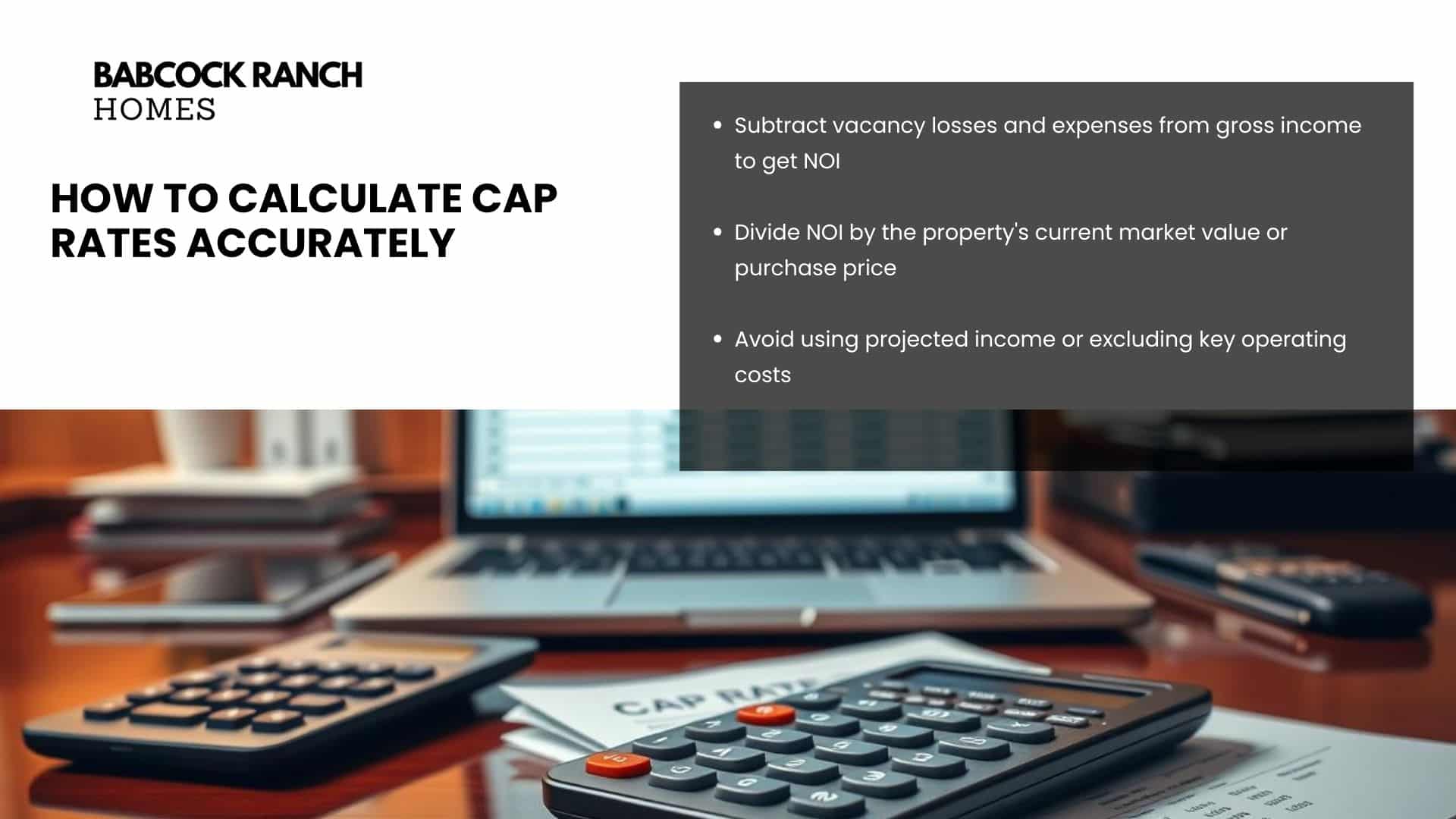
Common Calculation Mistakes to Avoid
Common mistakes in cap rate calculations include overlooking certain operating expenses, using inconsistent time periods for income and expenses, or failing to account for market vacancy rates. Another frequent error is using projected or pro-forma income figures rather than actual historical performance when evaluating existing properties.
To ensure accuracy, use verified income and expense data and ensure that the property value reflects current market conditions. Remember, capital expenditures and debt service are not included in the NOI calculation, as cap rates measure property performance before financing considerations.
Interpreting Cap Rates: High vs. Low
Understanding the nuances of cap rates is crucial for making informed decisions in commercial real estate investments. Cap rates serve as a critical metric, reflecting the relationship between a property’s value and its potential income.
What Constitutes a “Good” Cap Rate
Determining a “good” cap rate is not straightforward, as it depends on various factors including investment strategy, risk tolerance, and prevailing market conditions. Generally, a cap rate between 4% and 12% is considered viable, but the acceptability of a specific rate varies.
- Lower cap rates (typically 4-6%) are often associated with lower risk investments in prime locations with stable tenants.
- Higher cap rates (8-12% or more) usually indicate higher risk investments, potentially offering higher returns, often found in secondary markets or properties needing renovation.
Risk and Return Relationship
The cap rate is inversely related to property value; higher cap rates suggest higher risk and potentially higher returns, while lower cap rates imply lower risk but also lower returns relative to the property’s value. Investors must weigh the potential return against the associated risk.
Market conditions significantly influence cap rates. In premium markets, investors may accept lower cap rates due to anticipated appreciation and stable demand. Conversely, in smaller or riskier markets, higher cap rates are often required to attract investors.
Factors That Influence Cap Rates
Understanding the factors that influence cap rates is crucial for making informed investment decisions in commercial real estate. Various elements can impact cap rates, and being aware of these can help investors navigate the complex landscape of commercial property investment.
Location and Market Dynamics
Location is a significant factor influencing cap rates, with prime locations typically commanding lower cap rates due to higher demand, stability, and growth potential. Proximity to employment centers, highways, and public transit also plays a crucial role. Properties in high-demand and stable locations generally have lower cap rates, while those in transitional or outlying neighborhoods tend to have higher cap rates.
Property Type and Class
The type and class of a property significantly impact its cap rate. Class A properties, known for their quality and amenities, typically have lower cap rates compared to Class B or C properties. The condition and age of the property also influence cap rates, with newer, well-maintained properties commanding lower cap rates.
Tenant Quality and Lease Terms
Tenant quality and lease terms directly affect the risk perception of a property. Properties with creditworthy tenants on long-term leases usually have lower cap rates than those with less established tenants or shorter lease terms. This is because stable income streams reduce the risk for investors.
Economic Conditions
Economic conditions, including interest rates, inflation, and overall economic growth, influence investor expectations and thus affect cap rates across all markets. In a rising interest rate environment, for instance, cap rates may increase to remain competitive with other investment opportunities.
In conclusion, cap rates are influenced by a multifaceted array of factors including location, property type, tenant quality, and economic conditions. Understanding these elements is essential for investors to make informed decisions and achieve their investment goals.
The Impact of Interest Rates on Cap Rates
Interest rates have a significant impact on cap rates, influencing investment decisions in commercial real estate. As interest rates fluctuate, so do the cap rates, due to their inherent correlation.
Historical Correlation Between Interest Rates and Cap Rates
Historically, interest rates and cap rates have shared a positive correlation. When interest rates rise, cap rates tend to follow, although not always in perfect synchronization. This relationship exists because as the cost of borrowing increases, investors require higher returns to maintain their profit margins, pushing cap rates upward. There’s typically a spread between the 10-year Treasury yield and cap rates, with cap rates being 200-400 basis points higher, depending on the property type and market.
- The correlation between interest rates and cap rates is influenced by the cost of borrowing and investor return expectations.
- Historically, cap rates have been higher than the 10-year Treasury yield by 200-400 basis points.
Current Market Trends in Babcock Ranch, Florida
In Babcock Ranch, Florida, current market trends reflect the national pattern of gradually increasing cap rates in response to the higher interest rate environment. Despite rising interest rates, the strong fundamentals of the Babcock Ranch commercial market have helped maintain relatively stable cap rates compared to more volatile markets. Babcock Ranch Homes has observed that the anticipated interest rate cuts in 2025 could create favorable conditions for commercial real estate investors, potentially leading to property value appreciation as cap rates decrease.
Understanding the relationship between interest rates and cap rates helps investors time their market entry and exit strategies to maximize returns. When interest rates are rising, investors might seek properties with strong rent growth potential to offset the impact of increasing cap rates on property values.
Cap Rates Across Different Commercial Property Types
Cap rates across various commercial property types exhibit distinct patterns influenced by factors like demand, management complexity, and economic conditions. Understanding these differences is crucial for investors to make informed decisions.
Multifamily Properties
Multifamily properties typically command lower cap rates due to their stable cash flows and consistent demand. As of 3Q24, the national average cap rate for multifamily properties was 6.10%. In major markets like Los Angeles, cap rates were even lower at 5.00%, reflecting the strong demand and limited supply in these areas.
Office Buildings
Office buildings generally have higher cap rates compared to multifamily properties, reflecting the increased tenant turnover risk and higher tenant improvement costs. The national average cap rate for office buildings was 8.90% in 3Q24, while in Los Angeles, it was 7.30%. This higher cap rate indicates a higher perceived risk in the office sector.
Retail Spaces
Retail spaces show considerable variation in cap rates depending on factors like tenant quality, location, and format. Nationally, the average cap rate for retail spaces was 7.00% in 3Q24. In Los Angeles, retail cap rates averaged 5.50%, highlighting the impact of local market conditions on property valuations.
Industrial Properties
Industrial properties have seen decreasing cap rates in recent years due to strong demand from e-commerce and logistics sectors. As of 3Q24, the national average cap rate for industrial properties was 7.60%, while in Los Angeles, it was 5.30%. This trend indicates the growing competitiveness of industrial properties with other asset classes.
| Property Type | National Cap Rate (3Q24) | Los Angeles Cap Rate (3Q24) |
|---|---|---|
| Multifamily | 6.10% | 5.00% |
| Office | 8.90% | 7.30% |
| Retail | 7.00% | 5.50% |
| Industrial | 7.60% | 5.30% |
Understanding these cap rate variations across different commercial property types helps investors identify opportunities that align with their investment strategies and risk tolerance. Local market conditions, such as those in Babcock Ranch, may cause cap rates to differ from national averages, creating potential opportunities for informed investors.
Limitations and Considerations When Using Cap Rates
While cap rates are a valuable metric, they have significant limitations that investors must consider when evaluating commercial real estate investments. The capitalization rate can be a useful tool for properties that provide stable income, but it is less reliable for properties with irregular or inconsistent cash flows.
When Cap Rates Don’t Tell the Full Story
Cap rates have several limitations that can lead to incomplete or misleading assessments of a property’s investment potential. For instance, they don’t account for future changes in income or property value, making them less useful for properties with significant anticipated rent growth or decline. Additionally, cap rates fail to consider the impact of financing, which can dramatically affect an investor’s actual cash-on-cash return through leverage. They also don’t reflect capital expenditure requirements, which can significantly impact the true return on investment, especially for older properties.
- Cap rates may provide a misleading picture for properties with irregular income streams or those undergoing repositioning.
- They don’t account for future risks such as depreciation or structural changes in the rental market.
Complementary Metrics to Consider
To get a more comprehensive view of a property’s investment potential, investors should consider complementary metrics alongside cap rates. These include cash-on-cash return, internal rate of return (IRR), equity multiple, and debt service coverage ratio. Discounted cash flow analysis is also valuable, especially for properties with changing income streams, as it accounts for the time value of money.
| Metric | Description | Usefulness |
|---|---|---|
| Cash-on-Cash Return | Measures return based on cash invested | High |
| Internal Rate of Return (IRR) | Evaluates return over the holding period | High |
| Equity Multiple | Total return relative to initial equity | Medium |
| Debt Service Coverage Ratio | Assesses ability to cover debt payments | High |
By understanding the limitations of cap rates and using them in conjunction with other metrics, investors can make more informed decisions in the commercial real estate market.
Real-World Cap Rate Examples and Case Studies
Real-world examples illustrate how cap rates function in commercial real estate investment scenarios. For instance, consider an investor, John, who has $1 million to invest. He can either invest in government-issued Treasury bonds offering a 3% annual interest or purchase a commercial building with multiple tenants. If the commercial building generates $90,000 in total rent and $20,000 in expenses, the net operating income (NOI) is $70,000, resulting in a cap rate of 7% ($70,000/$1 million).
Commercial Property Investment Scenarios
Let’s examine a commercial office building purchased for $2 million with an NOI of $160,000, yielding an 8% cap rate. This represents the unlevered return on investment. However, if the property is financed with a 65% loan-to-value ratio at 5% interest, the cash-on-cash return would differ significantly from the cap rate, emphasizing the need for investors to consider multiple metrics.
As Forbes notes, “Cap rates are a crucial metric in commercial real estate, but they shouldn’t be the only consideration.” Investors must look beyond cap rates to understand the full potential of their investments.
Babcock Ranch Commercial Market Analysis
In Babcock Ranch, Florida, commercial properties have demonstrated resilience, with cap rates typically ranging from 6-8% depending on property type and location. Babcock Ranch Homes has observed that prime locations command cap rates 50-75 basis points lower than secondary locations. A recent case study of a retail center in Babcock Ranch showed that improvements in tenant quality and lease terms reduced the cap rate from 7.5% to 6.8%, increasing the property’s value by nearly 10%.
Conclusion: Leveraging Cap Rate Knowledge for Successful Investments
The cap rate is a fundamental concept in commercial real estate investing, providing a standardized method to evaluate different investment opportunities. Understanding cap rates, including their calculation and influencing factors, is essential for investors.
Babcock Ranch Homes offers expert guidance for investors navigating the commercial real estate market in Babcock Ranch, Florida. For personalized assistance, contact Babcock Ranch Homes at 518-569-7173.


